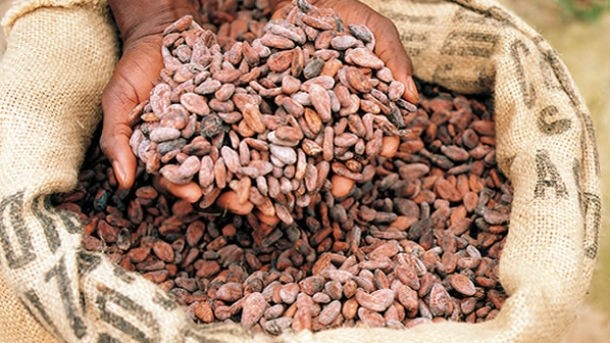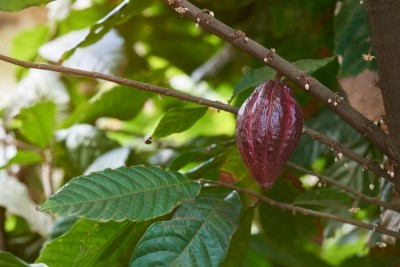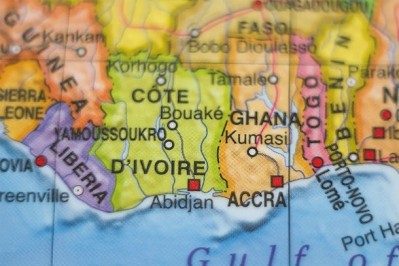Opinion
The state of today's cocoa market, as ICCO revises its forecast for production and grindings

At the end of May, the International Cocoa Organization (ICCO) revised its forecasts for cocoa production and grindings, showing a supply surplus of 10,000 tons for the current 2017/18 season, significantly smaller than previously anticipated by the organization three months earlier. This figure does not come as a surprise as most in the industry also expect the current season to end with a global supply more or less in balance with demand.
This situation contrasts with the previous season when the market experienced the second largest production surplus ever, which led international cocoa prices to drop by a whopping 58% from August 2016 to May 2017.
This price decline had a major impact on farmers’ income and raised further questions over the state of the sustainability of the cocoa sector. Data collected in 2016 before cocoa price dropped reveal that 57%[1] of cocoa farmers and workers in Côte d’Ivoire, the main cocoa producing country, were living in poverty. It is highly likely that the poverty headcount increased following the 36% reduction in the farmgate price set by the government in response to the falling international cocoa prices.
Over the past three months, international prices have recovered, partially only, from this sharp fall but for how long? Most eyes are now turned to the production forecasts for the next season starting in October. Cocoa pod counts show good prospect for the coming main crops in the two major producing countries, Côte d’Ivoire and Ghana.
Still many analysts expect a moderate supply deficit for the 2018/19 season. At this stage, uncertainty remains as it is still too early to draw reliable production forecasts.
The challenge of forecasting
While making reliable production forecasts a few months ahead of a new season is difficult but possible, producing medium-term forecasts (for two to five years) appear to be extremely challenging. The simple reason is that market analysts miss essential data on factors that drive the supply trend, such as cocoa planted areas and age distribution of the trees.
Mis-evaluating the production trend can cost dear to farmers and their governments alike. What happened between 2013 and 2016 provides a good illustration of this.
Some market commentators stated at the time that the cocoa sector had entered a period of structural supply deficit - projected to reach one million ton in 2020. Newspaper headlines warned that the world could be “running out of chocolate”. These projections led to further investments in cocoa production, which may have contributed to the second largest surplus ever recorded (the 2016/17 season, for example) – and with it, the price decline and dramatic impact on poverty described above.
The way forward
The governments of Côte d’Ivoire and Ghana blamed, in part, the drive towards higher farm productivity pushed by the cocoa and chocolate industry for the recent oversupply. Presidents Akufo-Addo and Ouattara signed in March 2018 the “Abidjan Declaration”, resolving to implement a Strategic Partnership Agreement with the priority to limit the risk of oversupply.
This is good news if the two countries coordinate their strategies and actions. Côte d’Ivoire went a step further by taking the controversial decision to suspend temporarily all distribution of high-yielding planting material to farmers. The industry questions this decision, as they consider that the increase in production was mainly due to more cocoa trees planted, causing further deforestation, and less due to rising tree productivity.
During the last World Cocoa Conference in April, Dr. Jean-Marc Anga, the ICCO executive director, rightly stated that “Business as usual in the cocoa sector is no longer an option.”
Now having said that, what are the next steps?
Reducing risks of structural overproduction of cocoa to ensure that prices do not decline is key. But should it be by limiting productivity gains? Most certainly not, in my opinion.
Productivity increases should be part of the set of tools for farmers to improve their income. However, these productivity gains need to be accompanied by a crop diversification strategy to reduce risks of oversupply and limit farmers’ livelihood exposure to cocoa price volatility.
Diversification and structural changes
Opportunities exist: Côte d’Ivoire and Ghana are both large importers of wheat and rice, and the African continent is a net food importer with its food balance sheet keeps degrading. The cocoa and chocolate industry has started to integrate crop diversification into their programs to support farmers.
But these efforts lack macroeconomic and strategic approach and are still too shy to have a significant impact. It is difficult to blame them as they were, and probably still are, concerned by risks of lack of cocoa supply in the near future.
Many cocoa farmers already grow more than one crop but bolder steps should be taken, in particular by governments of the major cocoa producing countries to develop country-specific cocoa development strategies, incorporating farmers’ crop diversification, assessing opportunities using evidence-based policy, and evaluating their macroeconomic impact.
More research for a sustainable development strategy
These are elements to take into consideration when developing a development strategy, but they are far from sufficient for policy makers to mobilise public resources. The cocoa community has started to ask the right questions, and policy makers and the industry are looking for adequate answers.
Cocoa is not the only tropical agricultural product facing sustainability challenges. However, it is probably the one that is experiencing the most difficulties in addressing them. Little progress has been achieved despite the efforts made in the past decades. More research on cocoa development strategies, including crop diversification, the distinct role of smallholders and large plantations, the development of a thriving network of small and medium-sized enterprises (SMEs) and agro-processing, is required to adequately advice the industry, governments and their development partners to better support cocoa farmers and to move decisively towards a sustainable cocoa economy.
For previous generations of farmers, cocoa growing used to be a way out of poverty, it is no longer the case; what will it take to undertake the structural changes required to make it happen again?
[1] This figure is the author’s calculation based on the World Bank, CGAP smallholder HH survey 2017. Poverty level is measured using the poverty threshold of US$3.2 a day, for lower-middle-income countries. Using the US$1.9 a day threshold, extreme poverty incidence among cocoa farmers and workers was around 37%.
Laurent Pipitone is a cocoa consultant and former economic director of the ICCO. He is now a director of FarmBridge International, who provide advisory services to governments, development institutions and cooperatives.







